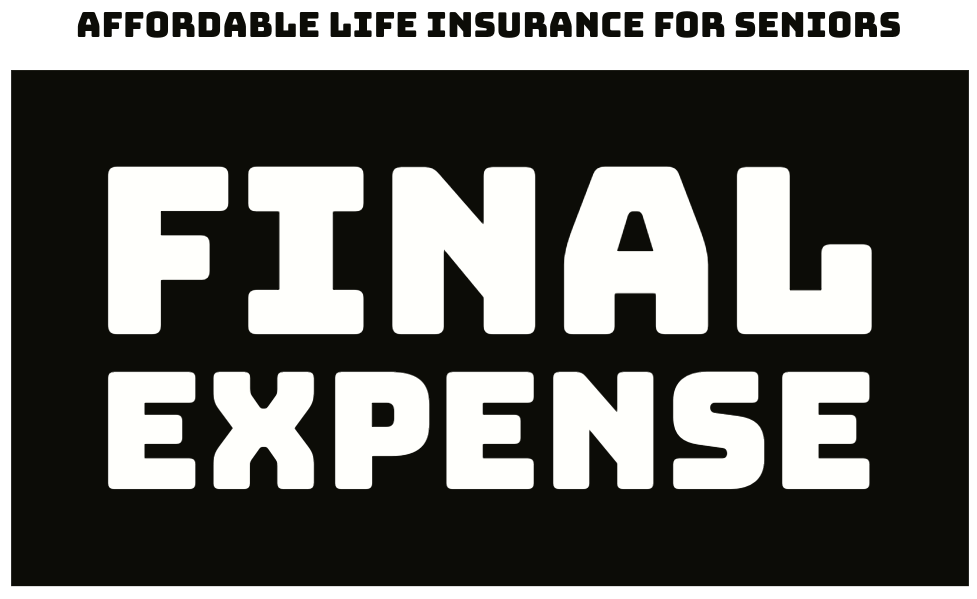Need to file a life insurance claim? First, notify the insurance company and gather required documents like the death certificate. This article will walk you through each step to ensure a smooth claims in life insurance process.
Key Takeaways
-
Notify the insurance company promptly upon the insured’s death and gather essential documents like the death certificate and policy information to initiate the claims process.
-
Ensure all required documentation is complete and organized, as missing or inaccurate documents can lead to processing delays or disputes.
-
Consider seeking professional assistance from a life insurance attorney to navigate the claims process effectively and resolve any potential disputes.
How to Start the Life Insurance Claims Process

The journey to secure life insurance benefits begins with a few crucial steps. Notify the issuing insurance company of the insured’s death as your first step. This initial contact sets the stage for the entire claims process. Once the insurance company is aware, they will provide the specific claim forms needed to proceed with life insurance proceeds.
Gather all necessary documents, including the death certificate, the life insurance policy number, and your personal identification details. Having these documents ready can streamline the claim process and avoid delays.
Next, let’s break down these initial steps, beginning with contacting the insurance company.
Contacting the Insurance Company
Begin the life insurance claim by notifying the insurance company of the insured’s death. Upon receiving this notification, the insurance company will start the claims process and attempt to locate all designated beneficiaries. Request the specific claim forms needed for the process.
Make sure the life insurance policy is active and locate the necessary documents. If the original policy is lost, use services like the National Association of Insurance Commissioners’ Policy Locator to retrieve it. You can file a claim without a policy number by providing all necessary information about the insured person.
Gathering Essential Documents
Gathering essential documents is critical for the claims process. The vital documents include a certified copy of the death certificate, the life insurance policy number, and the beneficiary’s personal identification details. These documents validate the claim and ensure that the insurance company has all the information needed to process it.
Submit proof of identity, such as a government-issued photo ID. Organizing these documents in advance helps prevent delays and streamlines the process.
Required Documentation for Life Insurance Claims

Once you’ve contacted the insurance company and gathered initial documents, understanding the specific documentation required is the next step. Certified copies of the death certificate and the insurance policy document are among the most critical. Without these, your claim may be rejected or delayed.
Maintain a comprehensive file with all relevant documents to streamline the process. Categorize documents like policy information and communication logs for easier access. Next, we’ll delve into each essential document in more detail.
Death Certificate
The death certificate is a pivotal document in the life insurance claims process. It serves as the official record confirming an individual’s death, which is necessary for various legal and financial processes, including life insurance claims. Having multiple certified copies is recommended to streamline the process.
Beneficiaries must attach a certified death certificate to the claim form to substantiate the claim. No original copies are needed, so keep them safe and use certified copies.
Life Insurance Policy Information
The life insurance policy document is crucial when filing a claim for benefits. A copy may suffice if the original document is unavailable. This document outlines the terms of the life insurance policies and provides essential details that support the claim.
Additional Documentation
In addition to the death certificate and policy information, other documents might be required depending on the circumstances. If the beneficiary is an estate, trust, minor, or deceased, additional documentation will be required. Similarly, policies that have been in force for two years or less may require extra documentation based on the contract’s language.
Collect the beneficiary’s personal identification details and any other requested forms. Check with the insurance company for specific document requirements to avoid delays.
Filing the Claim Form
Filing the claim form is a crucial step. Submit the form with the appropriate supporting documentation for timely processing. Provide a detailed account of the circumstances surrounding the insured’s death.
Next, we’ll explore how to complete and submit the claim form.
Completing the Claim Form
Accurately fill in all required information on the claim form to prevent delays. The principal beneficiary must sign the claim to ensure its validity. Double-check the accuracy of all entries to avoid mistakes.
Include the insured’s full name and policy number for proper identification. Keep copies of all submitted documents for your records.
Submission Methods
There are multiple ways to submit your claim form. Beneficiaries can file a life insurance claim by phone, email, or mail. Submitting claims electronically through an online portal is often faster and more secure.
Alternatively, mail claims to the Department of Veterans Affairs Insurance Center or submit them in person at an insurance office. Beneficiaries may also use a secure webpage to upload claim documents.
Types of Life Insurance Claims

Knowing the different types of life insurance claims is important. Each type comes with specific requirements and processes. The death benefit and death benefits are the amounts paid out upon the insured’s death. Beneficiaries can choose how they receive their insurance benefits, such as through lump sum payments or structured annuity options.
Understanding the different claim types and their implications aids beneficiaries in making informed decisions. Next, we’ll delve into the primary types of claims.
Death Benefit Claims
Death benefit claims are the most common type. Beneficiaries can be individuals, charities, family trusts, or businesses. The claims process for term life insurance mirrors that of whole life insurance.
Factors such as loans against the policy’s cash value and misrepresentation can affect the death benefit, potentially decreasing the payout. Beneficiaries should understand these factors to secure financial support after the insured’s death.
Accelerated Death Benefit Claims
Accelerated death benefit claims provide financial support to policyholders diagnosed with a terminal illness. Contact your insurance company to understand the specific requirements and forms needed to file a claim.
Make sure all submitted documentation is accurate and complete to avoid delays.
Traumatic Injury Claims
Traumatic injury claims are designed for individuals who suffer significant physical injuries that affect their quality of life. Complete form SGLV 8600 to file a traumatic injury claim under SGLI.
Understanding the specific policies and documentation required for traumatic injury claims can help ensure a smoother process. Ensure all necessary documentation is complete and you understand the claims process to improve your chances of a successful outcome.
Processing Time and Payout Options

The duration for receiving a life insurance payout ranges from 14 to 60 days, influenced by submission timing and policy specifics. Claimants may face tactics from insurance companies designed to delay payouts, like repeatedly requesting the same documents.
Knowing the typical processing times and available payout methods helps manage expectations. Next, we’ll explore these in more detail.
Typical Processing Time
The typical processing time for life insurance claims ranges from 30 to 60 days after filing. However, this can vary depending on the thoroughness of the documentation submitted and the insurer’s verification processes. Once all necessary documents are received, processing can be as quick as 3-5 business days.
Delays may occur if additional documents are requested or if there are discrepancies in the information provided. After processing, the beneficiary receives a letter of confirmation, a statement of values, and a settlement check.
Payout Methods
Payout options for beneficiaries include lump sum payments, annuities, and installment payments. The most common method is a lump sum payment, which provides the entire benefit amount at once.
Those preferring monthly payments should request additional information from the insurance company. Consulting a trusted financial professional can help beneficiaries make informed decisions based on their financial needs.
Common Challenges in Filing Life Insurance Claims
Filing a life insurance claim presents its own set of challenges. Common issues include missing documentation, disputes, and processing delays. Keeping detailed records of all communications with the insurance company can clarify disputes and expedite resolution.
Consult a financial advisor or attorney for guidance if difficulties arise in the claims process. Legal experts can improve claim success rates by helping beneficiaries understand their rights and the claim review process.
Missing Documentation
Incomplete documentation or inaccuracies can delay the review and approval of a life insurance claim. Proper documentation is crucial for timely processing; gather and accurately fill out all required documents before submission.
Addressing any missing or incomplete documentation quickly can facilitate faster processing. Double-check documents before submitting to avoid unnecessary delays.
Disputed Claims
In case of disputes, beneficiaries can appeal by providing additional documentation or clarifying issues with the insurer. Gathering supporting evidence and direct communication with the insurer can help resolve disputes efficiently.
Delays in Processing
Delays can occur due to incomplete documentation or the insurer’s internal verification processes. To expedite the claim process, submit all required documents accurately and promptly.
Understanding and preparing for potential delays can mitigate these issues.
Tips for a Smooth Life Insurance Claims Process

The life insurance claims process can be smoother with a few practical tips. Proactivity and organization significantly improve the efficiency of the claims process. Organizing documents in advance streamlines the process and reduces potential delays.
A checklist of necessary actions ensures no essential steps are missed. Clear and timely communication with the insurance provider can speed up claim assessment and resolution. Next, let’s explore these tips in more detail.
Stay Organized
Staying organized with claim documents streamlines the process and reduces stress. Required documentation includes a certified death certificate, life insurance policy information, and the beneficiary’s personal identification.
Organize all documents in a clearly labeled folder and regularly update them to ensure accuracy when filing the claim. This proactive approach prevents delays and simplifies the process.
Communicate Clearly
Timely and clear communication with the insurance provider can speed up claim assessment and resolution. Providing precise and complete information prevents misunderstandings and delays.
Effective communication is key to a smooth claims process.
Seek Professional Assistance
Hiring a life insurance attorney can ease the burden of navigating the claims process, especially during emotionally taxing times. Experienced legal professionals can clarify policy terms and assist with required documentation, ensuring accuracy.
In cases of disputes or denials, an attorney can advocate for the client, improving the chances of a successful resolution. Hiring a professional can help avoid mistakes on paperwork, common pitfalls that lead to delays or complications.
Summary
Navigating the life insurance claims process can be complex, but understanding each step can make it more manageable. From contacting the insurance company and gathering essential documents to filing the claim form and understanding different types of claims, each step is crucial. Staying organized, communicating clearly, and seeking professional assistance can significantly improve the efficiency and success of your claims process.
By following these guidelines, you can ensure that you receive the life insurance proceeds in a timely manner. Remember, being proactive and informed is the key to a smooth claims process. So, take these insights to heart and approach your life insurance claims with confidence and clarity.
Frequently Asked Questions
What documents are needed to file a life insurance claim?
To file a life insurance claim, you will need a certified copy of the death certificate, the life insurance policy number, and the beneficiary’s personal identification details. Ensuring you have these documents ready will help streamline the claim process.
How long does it typically take to process a life insurance claim?
Life insurance claims generally take 30-60 days to process, but if all the necessary documents are in order, it can be expedited to as little as 3-5 business days.
What are the different payout options for life insurance proceeds?
Life insurance proceeds can be received as lump sum payments, annuities, or installment payments, allowing beneficiaries to choose the option that best meets their financial needs. Each option offers different benefits, so it’s essential to consider your circumstances when deciding.
What should I do if my life insurance claim is disputed?
If your life insurance claim is disputed, gather supporting evidence, provide additional documentation, and communicate directly with the insurer to resolve the issue effectively. Taking these steps can help clarify the situation and facilitate the claims process.
How can I ensure a smooth life insurance claims process?
To ensure a smooth life insurance claims process, stay organized, communicate clearly with your insurance provider, and consider seeking professional assistance if needed. This proactive approach will enhance the efficiency of your claim.
